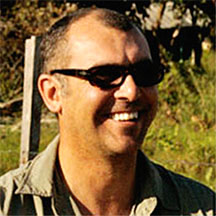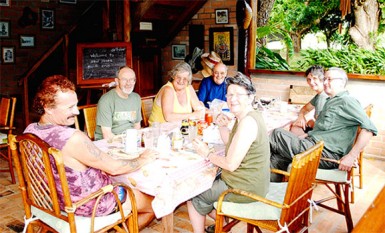You get a sense from listening to Wilderness Explorers General Man-ager Tony Thorne that trying to run a viable business in Guyana’s tourism industry can be like rowing against a gale force storm.
Last week, the tourism industry executive used the opportunity of a media briefing to publicize a visit here by a team of tourist industry representatives from Europe and Scandinavia, draw attention to some of the fault lines in the industry and to point to the collective public/private sector responsibility to repair those fault lines.
The remedial task, he believes, must begin with government placing the marketing of the country’s tourism product on the list of its developmental priorities. Simply put, no one will come to Guyana except they know where it is and how to find it.

Tony Thorne
Thorne is under no illusions that the global travel market still has a huge demand for sun, sand and sea. He insists, however, that there is a continually growing market for what Guyana has to offer and that its potential as a significant money-earner is considerable.
Accordingly, he believes that there is merit in hitching our sails to the mast of other countries in the hemisphere, like Brazil and Costa Rica, offering visitors a similar environmental fare.
He points out that while Costa Rica boasts a lesser level of wildlife than Guyana that country attracts around two million visitors annually, compared with the approximately 3,000 who find their way here every year.
The comparison ought to be eye-opening for the agency that provides our visitor arrival statistics.

Thorne says he sees no reason why more significant levels of investment in marketing Guyana’s eco-tourism product should not raise the level of visitor arrivals closer to that of Costa Rica. He believes too, that if visitor arrival numbers are increased, more hotels and lodges can be built and more rural and hinterland communities can secure a stake in a local tourism sector that will have more to offer. It is a logical assessment and again, one which government would do well to take cognizance of.
Thorne is of course far from alone in the view that weak air links between Guyana and regions outside the Caribbean inhibit the growth of the country’s tourism sector. While the most recent group of international tour operators to visit Guyana included visitors from Finland and Germany, Thorne points out that tourists wishing to get to Guyana from those locations are likely to encounter considerable challenges. A point has been reached, he said, where the solutions to travel challenges must be placed at the feet of governments.
With interior tourism being seriously affected by the disparity between the availability of visitor facilities in the respective hinterland regions, Thorne points out that Region Nine possesses significant advantages in terms of accommodation among other facilities, apart from which there is daily airlift to the region. He said that pointing to the disparity serves as a reminder that work needs to be done to build infrastructure in those regions that are lagging behind so that Wilderness Explorers and other tour operators can begin to do more to show off more of the country’s interior to visitors.





